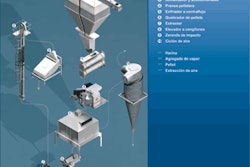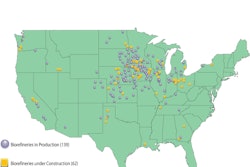Extensive flooding during June caused producers in several Midwestern states to change their harvesting intensions for the crop already planted, modify planting decisions for the small percentage of acres not yet planted, and consider replanting options, according to USDA’s National Agricultural Statistics Service (NASS) June 30 Acreage report. NASS collected most of the data for the annual report before the majority of the flooding occurred. In an effort to more accurately determine how many acres producers still intend to harvest for grain, NASS re-interviewed approximately 1,200 farmers June 23, 24, and 25 in flood-affected areas. As a result, it was determined that U.S. farmers intend to harvest 90.4 percent of their planted acres of corn for grain. This is a change from 92.4 percent as measured the first 2 weeks of June.
U.S. farmers intend to harvest 96.8 percent of their planted acres of soybeans. Without this additional survey data, historical averages would have indicated 98.7 percent of soybean acres to be harvested. NASS will conduct a more extensive acreage update during July. Findings of this study will be incorporated in the August Crop Production report.
On the planting side, USDA estimates corn planted acreage was down 7 percent from 2007, and soybean acreage up 17 percent from a year earlier.
The combination of this Acreage report and the June 30 Grain Stocks report revealed larger numbers than the trade had been expecting, and was “quite negative” for corn prices, but provided some support for soybean prices, according to University of Illinois economist Darrel Good.
“June 1 stocks of U.S. corn were estimated at 4.028 billion bushels, nearly 500 million larger than stocks of a year ago and about 100 million larger than the average trade guess. After a 13 percent increase in feed and residual use of corn during the first half of the year, use during the third quarter of the marketing year was about equal to that of a year ago. Use during the summer quarter will be impacted by the rate of liquidation of animal numbers, which has been extremely modest to date. Use may fall short of the USDA projection of 6.15 billion billions.”
Good says that June 1 stocks of soybeans were estimated at 676 million bushels, 416 million less than stocks of a year ago, but only a few bushels larger than the average trade guess.



.jpg?auto=format%2Ccompress&fit=crop&h=167&q=70&w=250)












